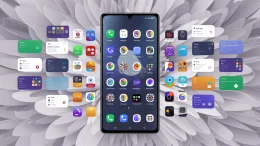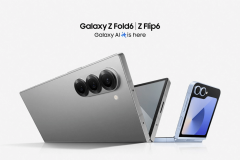While we’re on the subject of mobile
2.0 this week, one of my favorite web startups Sharpcast has just announced a new version of their
Sharpcast Photos Mobile Edition. Sharpcast is a data sync service for consumers, allowing
users to sync their data across PC, Web, mobile and other devices. Right now their
flagship product is Sharpcast Photos. But coming soon is a more complete data sync
service, called Project
Hummingbird, which will include documents, music, and video. See Read/WriteWeb’s previousposts about
Sharpcast for background.

For now the mobile edition of Sharpcast Photos enables users to view photo collections
on their mobile phones, as well as share desktop PC and web photos, and sync camera-phone
photos automatically to a user’s PC and the web. Basically photos can now be synced
up for a single user across mobile phones, wireless PDA, all of a user’s PCs, and their
web presence with Sharpcast. This includes backing up the photos, organizing them into
albums and keeping everything in sync across devices.

The company claims this is “the first instance where Blackberry-like push
synchronization capability is available to the average consumer, outside of an enterprise
setting.” Of course, when it comes to mobile the big question is: which phones does
[insert any mobile web service] support? In this case, Sharpcast Photos mobile edition
currently supports Windows Mobile 5.0 smartphones, Samsung Blackjack, the Palm Treo 700w,
the Motorola Q, the HTC Star Trek (Cingular 3125) the UT Starcom 6700, and “dozens of
others”. They say that more phone platforms will be supported in 2007. In another deal,
Sharpcast announced a partnership with Alltel to distribute their technology in Windows
Mobile phones.
Sync is something to watch in ’07
Sharpcast is one of those web technologies that really is ‘next generation’. Since we,
as consumers, increasingly use a whole range of Internet-connected devices – we need some
way to synch our personal data across those devices. It’s an area where Microsoft is
strong at (with their dominant Windows platform), but the likes of Google and Yahoo are
not that far behind either – in their cases, the Web is the platform. Small startups like
Sharpcast are providing a lot of innovation in this area, so keep an eye out for them and
others to emerge as a force in 2007.

















